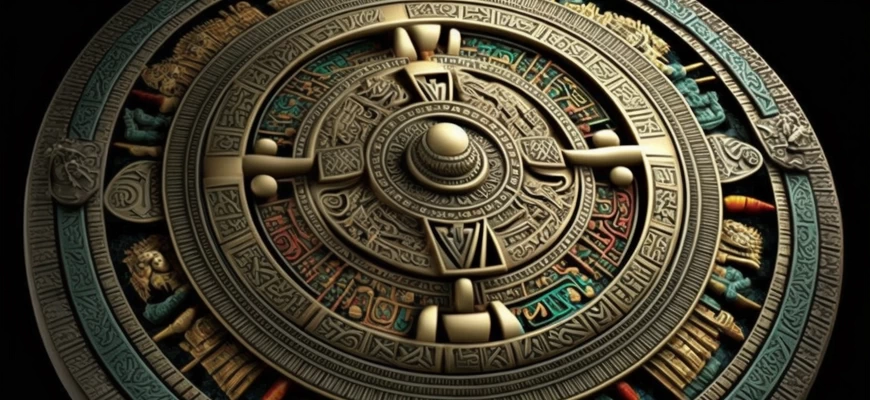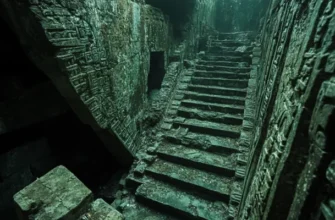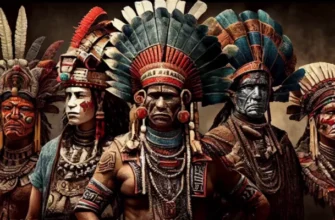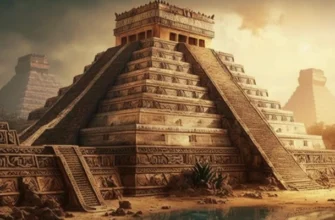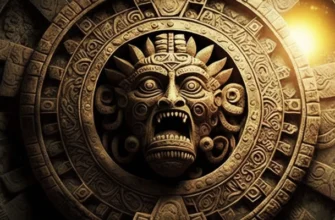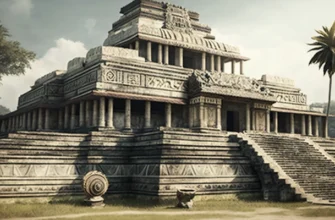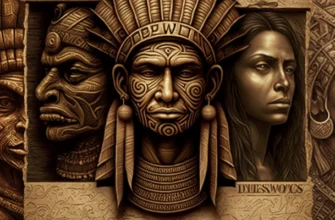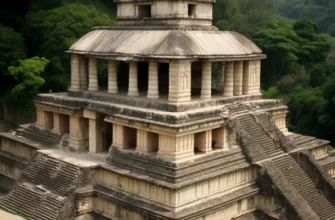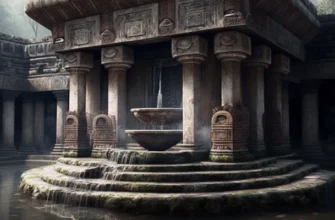Mayan calendar systems consist of several calendars that were used for timekeeping, astronomical rites, and predicting the future. The main calendars include the Long Count, Tzolkin, and Haab, which had their own structure and purpose. In addition, the Maya used the solar and lunar calendars, as well as the Holy Circle calendar, which calculated long-term cycles. Mayan calendars were used not only for practical purposes but also had mythological and religious significance. Today, Mayan calendars remain popular and interesting to study in science and culture.
- Calculating time in Mayan calendars
- Astronomical rites and Mayan calendars
- Solar calendar
- Lunar calendar
- The Holy Circle Calendar
- Prediction and use of Mayan calendars
- Comparison of Mayan calendars with Eastern calendars
- The use of Mayan calendars in modern times
- Mythological and religious aspects of Mayan calendars
- The use of Mayan calendars in modern times: popularity and learning
Calculating time in Mayan calendars
The calculation of time in Mayan calendars was based on several calendars with different structures and cycle lengths. The most famous Mayan calendars include:
The Long Count, which consists of 13 baktuns (each of 144,000 days) and counts from the date of August 11, 3114 B.C. It was used to calculate long-term events and historical periods.
Tsolkin, which has a cycle of 260 days and was used to calculate days and astrological forecasts. It consisted of 20 names and 13 numbers that were repeated in various combinations.
Haab, which had a cycle of 365 days and was used to calculate agricultural seasons. It consisted of 18 months of 20 days each and an additional break of 5 days, which were considered unlucky.
Each calendar had its own purpose and was used in Mayan cultural life. They helped to calculate the time for various ceremonies, events, and agricultural work.
Astronomical rites and Mayan calendars
The Maya’s astronomical knowledge helped them calculate calendars and perform religious rituals related to astronomical events. For example, the Maya used the Tzolkin calendar to predict the days when the star Venus would be visible in the sky, as well as to determine the beginning and end of the astronomical year.
In addition, they used the Haab calendar to determine agricultural cycles associated with the changing seasons and the cyclical nature of the solar eclipses. The Maya held rituals and festivals related to changes in the position of the Sun and stars in the sky, and celebrated dates associated with important astronomical events such as eclipses and solstices.
The Maya’s knowledge of astronomy and calendars reflected their cultural and religious beliefs, and helped them develop calendar systems that remain interesting and studied in science and culture today.
Solar calendar
The Mayan solar calendar, also known as the Haab calendar, was created to determine the solar year and agricultural cycles. It consists of 365 days divided into 18 months of 20 days each, as well as an additional month of five days known as “dangerous” time.
The Haab calendar was important to the Maya because it helped them calculate the time of sowing and harvesting, as well as for planning religious holidays and events. However, because 365 days does not correspond to an exact solar year, the Haab calendar had a correction system that added another day every 4 years.
The Mayan solar calendar is an important source of information about their culture and science, and continues to attract the attention of researchers and astronomy enthusiasts around the world.
Lunar calendar
The Mayan lunar calendar, known as Tzolkin, was created to determine the days and is related to the astronomical cycles of the moon and the planet Venus. Tzolkin consists of 260 days, which represent a combination of 13 numbers and 20 animal names.
The Maya used the Tzolkin calendar to predict the days when Venus would become visible in the sky, as well as to determine the days of religious festivals and events. In addition, they believed that each day of Tzolkin was associated with specific qualities and energy that could affect human life.
The Mayan lunar calendar has a sophisticated correction system that allows it to be coordinated with other calendars and astronomical cycles. This system allowed the Maya to accurately predict astronomical events and use this knowledge to develop their culture and science.
The Mayan lunar calendar is one of the most complex and elaborate calendars in the world, and continues to be a subject of study and wonder for scholars and astronomers around the world.
The Holy Circle Calendar
The Holy Circle Calendar, also known as the Long Count, was the primary Mayan calendar for calculating long periods of time. It was created around 200 BC and contains 5 numbers representing different units of time, from a day to a period of 1,872,000 days.
The Holy Circle calendar was used to predict the dates of the restoration and end of the world, as well as to determine the cosmic cycles associated with the movement of planets and stars in the celestial sphere. Its correction system and accuracy of calculations still amaze researchers.
The Holy Circle Calendar played an important role in the cultural and religious life of the Maya. It was associated with various rituals and festivals, and was also used to determine the time of birth, marriage, travel, and other events.
The Sacred Circle Calendar remains an amazing achievement of Mayan science and culture, and its study helps to preserve and expand knowledge about the high level of development of Mayan civilization.
Prediction and use of Mayan calendars
Prediction and the use of calendars were an important part of Mayan cultural and religious life. The Holy Circle calendar was used to predict the dates of the renewal and end of the world, as well as to determine cosmic cycles. The Tzolkin calendar cycle, in turn, was used to predict the influence of the stars on human destiny and to predict the future.
Calendars were also used to determine the timing of various religious rites and holidays. For example, according to the Mayan tradition, the end of the world was supposed to come on December 21, 2012, which was predicted by the Holy Circle Calendar.
Despite the fact that some Mayan predictions were false, Mayan calendar systems demonstrate a high level of science and mathematics development in this culture. The use of Mayan calendars was not only practical, but also had strong symbolic and religious meaning, reflecting the importance of time in Mayan culture and worldview.
Comparison of Mayan calendars with Eastern calendars
Mayan calendars share some similarities with Eastern calendars, such as an interest in astronomy and the use of solar and lunar cycles. However, Mayan calendars have their own peculiarities, such as the use of the Holy Circle calendar with a long cycle lasting more than 5000 years and a number system of 20, which allows for more accurate date determination.
In addition, Mayan calendars were of great importance in religious life, and the use of calendars was associated with prophecy and rituals. In Eastern calendars, such as Chinese and Indian, although they are also important, the religious aspects are not as highly developed.
Thus, Mayan calendars are unique and of great importance for understanding the Mayan cultural and scientific heritage.
Yes, Mayan calendars are a very important part of the Mayan cultural and scientific heritage. They not only helped to determine the time, but also had a deep religious and cosmological meaning. The study of Mayan calendars allows us to better understand their culture, worldview, and scientific knowledge, and helps modern researchers study and reconstruct the history of this ancient civilization.
The use of Mayan calendars in modern times
Despite the fact that Mayan calendars were developed over a thousand years ago, they still remain important in the modern world. For example, many people use the Mayan calendar to calculate their horoscope and determine the appropriate energies at a particular time.
Also, some scientific studies use data from Mayan calendars to study astronomy and astrology, archeology, and history. The study of the use of Mayan calendars helps to better understand the history of this ancient civilization and its scientific achievements.
In addition, Mayan calendars are used in the tourism industry, as a popular tourist attraction in Mexico and Kentucky, where you can see ancient calendars and ruins of Mayan cities. Thus, Mayan calendars continue to have significance and are used in various fields in the modern world.
Mythological and religious aspects of Mayan calendars
Mythological and religious aspects were important in the development of Mayan calendars. They believed that all events in the world were connected to astronomical phenomena, such as the movements of the planets, the Sun, and the Moon. Mayan calendars reflect their religious and mythological beliefs, as well as the role of astronomy in their lives and culture.
For example, the Mayan Sacred Circle calendar reflects the spiritual philosophy that each day has a corresponding symbol that reflects different aspects of the gods and natural phenomena. The Mayan lunar calendar reflects the lunar deities and the belief that their actions affect human destiny.
In addition, Mayan calendars were important for religious rites and celebrations. For example, the Maya used the solar calendar to determine the exact dates for religious ceremonies, and the lunar calendar was used to determine the time for sacrifices.
Thus, mythological and religious aspects were important to the Maya calendars, which reflected their religious and philosophical beliefs as well as the role of astronomy in their lives and culture.
The use of Mayan calendars in modern times: popularity and learning
The use of Mayan calendars in modern times continues in both scholarly and popular contexts. Mayan calendars are used in astronomy, archeology, anthropology, and other sciences to study Mayan culture and history. In addition, they have become popular in popular culture, particularly in film and literature. Teaching of Mayan calendars also continues, particularly in universities and museums. Understanding and studying Mayan calendars is important for the preservation and popularization of this unique cultural heritage.
